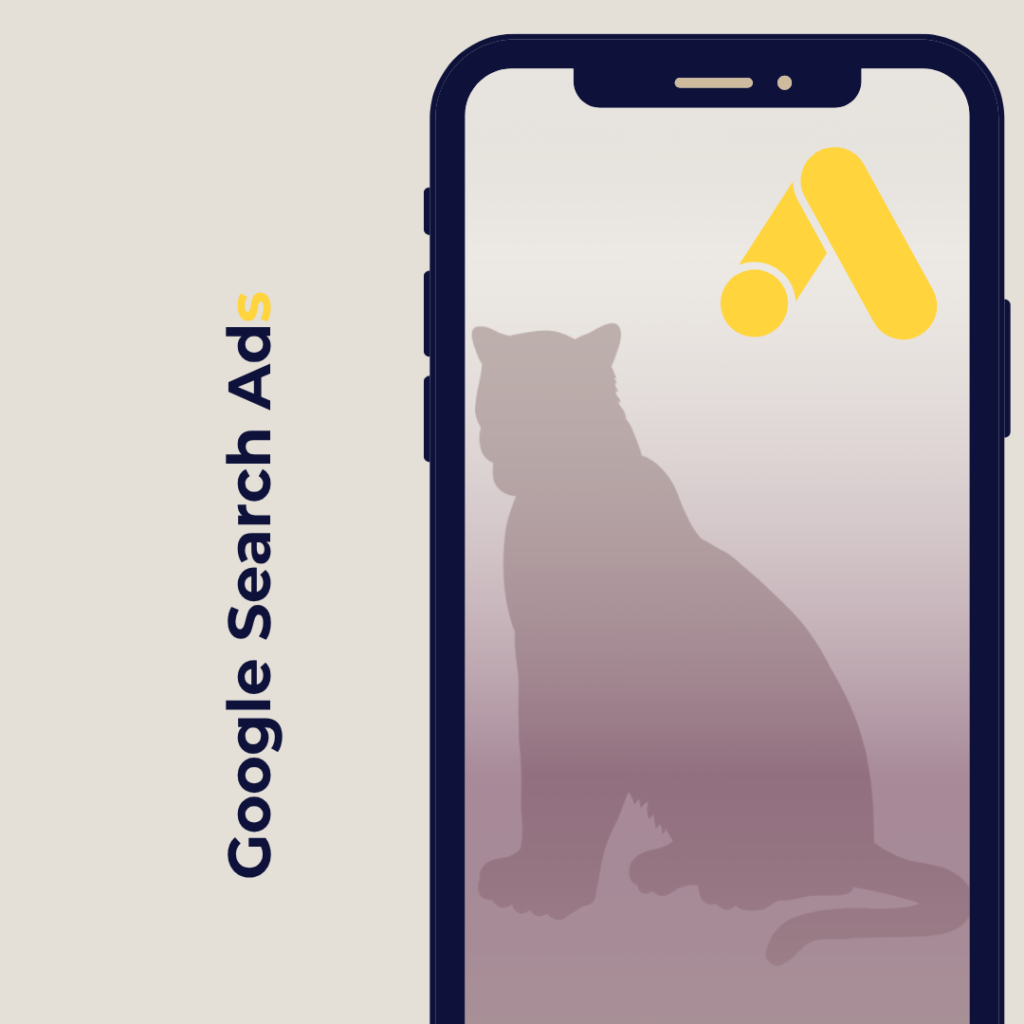

Google Search Ads remain a cornerstone for driving targeted traffic and achieving measurable business results. As one of the most powerful tools in the marketer’s arsenal, understanding how to effectively use Google Search Ads can be a game-changer for businesses of all sizes.
Google Search Ads are paid advertisements that appear at the top of Google’s search engine results pages (SERPs). These ads are triggered by user search queries and are designed to provide highly relevant content to potential customers. Advertisers bid on specific keywords to ensure their ads appear when users search for those terms.
To run a successful Google Search Ads campaign, it’s essential to understand its core components:
Keywords
Keywords are the foundation of your campaign. They determine when and where your ads will appear. Effective keyword research involves:
Ad Copy
Your ad copy must be compelling and concise. Focus on:
Bidding Strategy
Google Ads operate on an auction system. Your bidding strategy influences where your ad appears and its cost. Common strategies include:
Ad Extensions
Enhance your ads with extensions to provide additional information:
Immediate Visibility: Unlike organic search results, which take time to climb the rankings, Search Ads give your brand instant visibility.
Targeted Reach: Ads are shown to users actively searching for products or services, ensuring high intent and relevance.
Measurable Results: With detailed analytics, you can track impressions, clicks, conversions, and ROI.
Scalable: Campaigns can be adjusted in real-time, allowing businesses to scale efforts up or down based on performance and budget.
To maximize the effectiveness of your Google Search Ads, consider these optimization tips:
Monitor Quality Score: Google assigns a Quality Score to your ads based on relevance, click-through rate (CTR), and landing page experience. Higher scores lead to lower costs and better ad placement.
Use Negative Keywords: Exclude irrelevant search terms to avoid wasting budget on unqualified traffic.
A/B Testing: Test different ad copies, headlines, and CTAs to see what resonates best with your audience.
Analyze Performance Metrics: Regularly review key metrics like CTR, conversion rate, and cost-per-click to refine your strategy.
Neglecting Mobile Optimization: A significant portion of searches comes from mobile devices. Ensure your ads and landing pages are mobile-friendly.
Overlooking Ad Extensions: Failing to utilize extensions can reduce your ad’s visibility and effectiveness.
Setting Unrealistic Budgets: Start with a realistic budget and adjust based on performance.
Ignoring Analytics: Data is your best friend. Use insights to make informed decisions and continuously improve your campaigns.
Google search advertising is a powerful tool for reaching potential customers at the right time. The most important thing is preparing your website and identifying your target audience. By understanding the basics, crafting compelling ads and optimising campaigns, marketers can achieve significant results. Whether you’re a small business or a large enterprise, mastering Google Search Ads will open up new opportunities for growth.
Start experimenting today and watch your business thrive in a competitive digital environment.

Launching your first Google Search Ads campaign can feel overwhelming, especially with so many options and settings to navigate. However, with a clear plan and step-by-step guidance, you can create a campaign that drives meaningful results for your business. Here’s a comprehensive guide to help you get started.
Before diving into Google Search Ads, it’s crucial to establish what you want to achieve. Clear goals will help you determine the type of campaign to run and the metrics to track. Common goals include:
If you don’t already have a Google Ads account, follow these steps:
Google Ads offers several campaign types, each designed for specific goals:
Search Campaigns: Text ads that appear in search results. Ideal for driving traffic or conversions.
Display Campaigns: Visual ads that appear on websites within Google’s Display Network. Great for brand awareness.
Shopping Campaigns: Product ads that appear in search results. Best for e-commerce businesses.
Video Campaigns: Video ads on YouTube and Google’s video partners.
Performance Max: All-in-one campaigns across all Google properties.
For your first campaign, a Search Campaign is often the best choice as it’s straightforward and focuses on high-intent traffic.
Budget: Determine how much you want to spend daily. Start with a modest budget and scale as you analyze performance.
Bidding Strategy: Choose how you’ll pay for clicks or impressions. For beginners, the Maximize Clicks or Target CPA (Cost Per Acquisition) strategies work well.
Google Ads allows you to target specific demographics and behaviors:
Location: Select the geographical area where your ads will appear.
Language: Choose the language your audience speaks.
Devices: Optimize for desktop, mobile, or tablets based on your audience.
Audience Segments: Target based on interests, behaviors, or life events.
Keywords are the backbone of your Search Campaign. They determine when your ads appear. Use tools like Google Keyword Planner to:
Identify relevant keywords for your business.
Analyze search volume and competition.
Group keywords into themed categories for better targeting.
Headline: Craft attention-grabbing and relevant headlines. You have three headline fields, each with a 30-character limit.
Description: Highlight benefits or solutions your product/service offers. Use up to 90 characters.
Display URL: Ensure your URL looks clean and relevant.
Call-to-Action (CTA): Include a clear and actionable CTA like “Shop Now,” “Learn More,” or “Get a Free Quote.”
Ad extensions enhance your ads by providing additional information. Common extensions include:
Sitelinks: Links to specific pages on your site.
Call Extensions: Display your phone number.
Location Extensions: Show your business address.
Callout Extensions: Highlight key selling points, like “Free Shipping” or “24/7 Support.”
Integrating Google Ads with Google Analytics provides deeper insights into your campaign’s performance. You can track user behavior, measure conversions, and refine your strategy.
Once you’ve reviewed all settings, hit “Publish.” After launching, monitor your campaign’s performance regularly:
CTR (Click-Through Rate): Indicates ad relevance.
CPC (Cost Per Click): Shows how much you’re paying per click.
Conversions: Measures how well your ads are achieving your goals.
Campaign optimization is an ongoing process. Use the following tips:
Refine Keywords: Add negative keywords to exclude irrelevant searches.
Test Ad Variations: Run A/B tests on headlines and descriptions.
Adjust Bids: Increase bids for high-performing keywords and reduce them for underperforming ones.
Focus on High-Quality Score: Ensure your ads are relevant, compelling, and direct users to optimized landing pages.
Launching your first Google Ads campaign is a learning experience. Start small, analyze the results, and refine your approach over time. With consistency and the right strategies, Google Ads can become a powerful driver of growth for your business.
Ready to take the plunge? Follow these steps and start reaching your audience today!
Google Ads is one of the most powerful advertising platforms, offering detailed performance data to help you optimize your campaigns. Among the myriad of metrics available, CTR (Click-Through Rate), CPC (Cost Per Click), CPA (Cost Per Acquisition), and ROAS (Return on Ad Spend) are some of the most critical. Understanding these metrics and knowing how to track them can significantly improve your campaign outcomes.
What is CTR? CTR measures the percentage of users who click on your ad after seeing it. It is calculated as:
For example, if your ad receives 1,000 impressions and 50 clicks, your CTR is 5%.
Why is CTR Important? CTR is a key indicator of ad relevance. A high CTR suggests that your ad is resonating with your target audience, while a low CTR may indicate a need for improvement in your keywords, targeting, or ad copy.
How to Track CTR Google Ads automatically tracks CTR for every ad, keyword, and campaign. You can find this metric in the “Campaigns” or “Ads & Extensions” tabs.
What is CPC? CPC refers to the amount you pay for each click on your ad. It is determined by Google’s auction system and can vary based on factors like keyword competition and Quality Score.
Why is CPC Important? CPC impacts your overall ad spend and ROI. Lower CPC means you can get more clicks for the same budget, while higher CPC might limit the reach of your campaigns.
How to Track CPC CPC data is available in the Google Ads interface. To monitor it effectively:
Check the “Keywords” tab to see CPC at the keyword level.
Use automated bidding strategies like “Maximize Clicks” to control CPC
What is CPA? CPA measures the cost of acquiring a single customer or lead. It is calculated as:
For instance, if you spend $500 and generate 10 conversions, your CPA is $50.
Why is CPA Important? CPA helps you understand the efficiency of your campaigns in driving valuable actions. It’s especially useful for businesses focused on lead generation or e-commerce.
How to Track CPA Google Ads tracks CPA if you have conversion tracking set up. To enable this:
Go to the “Tools & Settings” menu.
Select “Conversions” under the “Measurement” section.
Define conversion actions (e.g., purchases, form submissions).
Once set up, CPA will be visible in the “Campaigns” or “Ad Groups” tabs.
What is ROAS? ROAS measures the revenue generated for every dollar spent on ads. It is calculated as:
For example, if you spend $1,000 on ads and earn $4,000 in revenue, your ROAS is 4:1 (or 400%).
Why is ROAS Important? ROAS provides a direct measure of your campaign’s profitability. A high ROAS indicates that your campaigns are generating strong returns, while a low ROAS suggests the need for optimization.
How to Track ROAS To track ROAS:
Ensure you have conversion tracking set up to measure revenue.
Link your Google Ads account with Google Analytics or e-commerce platforms to sync revenue data.
Check the “Conversions” section in Google Ads to view ROAS metrics.
Monitor Regularly: Keep a close eye on your campaign performance and make adjustments based on the data.
Optimize Continuously: Improve CTR by refining ad copy and targeting. Reduce CPC by focusing on high-quality keywords. Lower CPA by enhancing landing pages and conversion funnels. Boost ROAS by targeting high-value audiences.
Leverage Automated Tools: Use Google Ads’ Smart Bidding strategies to optimize bids for conversions and ROAS automatically.
CTR, CPC, CPA, and ROAS are more than just numbers—they are the backbone of effective campaign optimization in Google Ads. By understanding what these metrics mean and how to track them, you can make data-driven decisions to enhance your campaigns, maximize ROI, and achieve your marketing goals.
Start analyzing these key metrics today to unlock the full potential of your Google Ads strategy.
Social media marketing is a powerful tool for building brand awareness, engaging with target audiences, and driving conversions
SEO is one of the most effective long-term digital marketing strategies for increasing visibility, traffic, and credibility.
PPC advertising is a highly effective way to generate immediate traffic, leads, and sales through paid placements on search engines and social platforms.